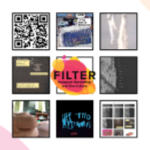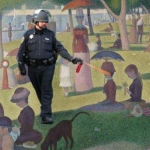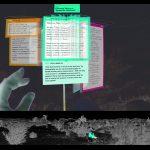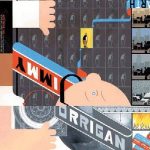2025
This time on Off Center, Scott Rettberg is joined by Sarah Edmands Martin, a designer and researcher at the University of Notre Dame. Her research takes place at the intersection of visual communication design, critical fabulation, and media aesthetics. In this episode they discuss speculative design.
Sarah Whitcomb Laiola and Richard Snyder share their experience of cataloguing Instagram 'zine Filter for a travelling exhibition with The NEXT, the Electronic Literature Organisation's museum, library, and preservation space. Arguing that platforms are not merely tools for distribution but shape the very literariness of a work, Laiola and Snyder suggest that e-lit archival practices must evolve to recognize and account for the integral role contemporary social media platforms can play.
2022
After having lived through three generations of electronic literature, and having experienced pre-web, web, and post-web literary periods, Will Luers takes a step back and advocates an "independent digital culture" in which literary artists might explore "a reality between language and the ineffable (be it artistic, religious or secular)." A mixture of technics and magics, we may be approaching a fourth generation of e-lit that is closer to pre-industrial folklore than it is to our present, technically managed space for individual and collective "creativity."
2021
Jin Sol Kim and Lulu Liu interview the Decameron 2.0, a Canadian collaborative made up of professors and artists who are inspired by Giovanni Boccaccio’s plague narrative The Decameron (1348-1353) to develop creative works during and in response to the COVID-19 pandemic.
Burdick situates the speculative software prototypes of Trina: A Design Fiction as design-theory hybrids that can expand our understanding of critical making and critical design. The essay offers four readings of the Trina prototypes, designed as research into speculative writing technologies that are situated and embodied. The essay concludes with the introduction of an “Indexical Reader,” a design concept for close and distant reading in the Humanities.
2003
Infiltrate, animate, dominate. Lisette Gonzales reviews Derek Pell's Little Red Book of Adobe LiveMotion.
2001
Reviewing new scholarship by David Joselit, Molly Nesbit, Thierry de Duve, and Linda Henderson, Hannah Higgins proposes that writing about Duchamp needs to be Duchampian in flavor.
--> Chicago art critic John Brunetti reviews The Truth on Tape, a survey of Daniel Wenk's art
Stephanie Strickland investigates an epistemological shift in web-specific art and literature, from an understanding that is less about structure and more about resonance.
Jan Baetens argues that Chris Ware's print-based comic book, Jimmy Corrigan, has already produced the revolution longed for by Scott McCloud - a revolution, however, that will not be digitized.
Cary Wolfe reviews Allison Hunter's installation at Europas Parkas in Lithuania. In her work, interspersed as it is among that of other artists, Hunter focuses our attention on signification in the crevices of the so-called public sphere.
Chicago art critic John Brunetti reviews The Truth on Tape, a survey of Daniel Wenk's art, and Black Mountain College's Dossier Ray Johnson.
Allison Hunter shows how an artist can be fully contemporary without digitizing, streaming, or projecting imagery. Presenting jacquard looms and punch card technologies from the 1950s, difference engines and magnetic core memory stacks, silicon chips in wood housing and digital code on 18th-century woven fabric, Eve Laramee manipulates history like a medium.
In spite of the millennial call for an end to issues in Winter y2k, ebr11 - a new issue - went online at the turn of the year 2000/2001. There would be yet another issue a year later ("Music/Sound/Noise") before the transition to the new interface could be completed.
1999
Linda Brigham breaks the first rule of Fight Club and talks about what the movie industry keeps secret - not male masochism, anti-corporate terrorism, self-help, or even heterosexual anxiety, but how best to deliver a commodity that doesn't act like one.
1995
Michael Joyce looks at hypertext, body art, body piercing, and Web culture.





